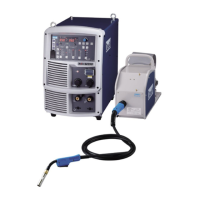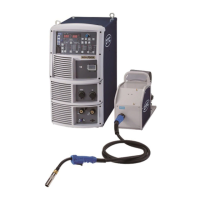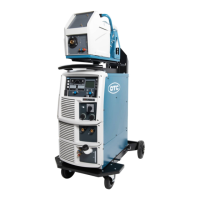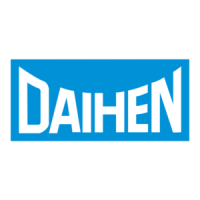What does Daihen OTC Welbee WB-M350 Portable Generator error E-301 mean?
- DDavid CostaSep 1, 2025
If your Daihen Portable Generator displays error codes E-301 to E-304, it indicates that the temperature inside the welding power source exceeded the allowable range. Leave the power on and let the cooling fan run for at least 10 minutes before turning off the power. After that, clean any dust inside the welding power source. Be careful not to exceed the rated duty cycle after recovery.




